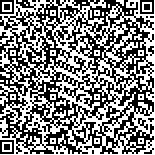| 夏 亮,陆涤宇,周 俊.131I-SPECT/CT多模态显像联合超声及血清Tg对分化型甲状腺癌颈部淋巴结转移的诊断价值[J].肿瘤学杂志,2017,23(4):278-281. |
| 131I-SPECT/CT多模态显像联合超声及血清Tg对分化型甲状腺癌颈部淋巴结转移的诊断价值 |
| 131I-SPECT/CT Fusion Imaging Combined with Ultrasonography and Serum Tg in Diagnosis of Lymph Node Metastasis in Patients with Differentiated Thyroid Cancer After 131I Treatment |
| 投稿时间:2016-11-01 |
| DOI:10.11735/j.issn.1671-170X.2017.04.B005 |
|
 |
| 中文关键词: 131I-SPECT/CT断层融合显像 131I全身显像 分化型甲状腺癌 放射性同位素 |
| 英文关键词:131I-SPECT/CT fusion imaging 131I whole body scan differentiated thyroid cancer radionuclide |
| 基金项目: |
|
| 摘要点击次数: 2051 |
| 全文下载次数: 694 |
| 中文摘要: |
| 摘 要:[目的] 探讨SPECT/CT多模态显像联合颈部超声及血清甲状腺球蛋白(Tg)对分化型甲状腺癌(DTC)131I治疗后颈部淋巴结转移的诊断价值。[方法] 68例DTC术后患者,131I治疗前行血清Tg 及颈部超声检查,131I治疗后5d分别行WBS及SPECT/CT多模态显像,联合颈部超声及Tg,以病理及随访结果为诊断标准,采用χ2检验对两种显像方法进行比较。[结果] 68例DTC患者,颈部病灶共180个,SPECT/CT多模态显像检出率96.67%(174/180),WBS检出率90.56%(163/180,),差异有统计学意义(χ2=5.26,P=0.018)。单独联合超声或Tg,以及同时联合超声和Tg时,131I-SPECT/CT多模态显像对DTC术后颈部淋巴结转移灶的诊断价值与131I-WBS比较差异均有统计学意义(χ2=34.065,P<0.001;χ2=38.246,P<0.001;χ2=19.431,P<0.001)。灵敏度、特异性及准确性方面,131I-SPECT/CT多模态显像联合超声分别为94.57%、94.31%、94.44%,131I-WBS联合超声分别为78.26%、60.23%、69.44%;131I-SPECT/CT多模态显像联合Tg分别为94.57%、92.05%、93.33%,131I-WBS联合Tg分别为64.13%、67.05%、65.56%;131I-SPECT/CT多模态显像联合超声及Tg分别为94.57%、97.73%、96.11%,131I-WBS联合超声及Tg分别为66.30%、93.18%、79.44%。[结论] SPECT/CT多模态显像联合超声及血清Tg能提高DTC患者131I治疗后颈部淋巴结转移病灶的检出率,明显提高颈部淋巴结转移诊断的灵敏度、特异性及准确性。 |
| 英文摘要: |
| Abstract:[Objective] To evaluate the application of 131I -SPECT/CT fusion imaging combined with ultrasonography(US) and serum thyroglobulin(Tg) in diagnosis of cervical lymph node metastasis in patients with differentiated thyroid cancer(DTC) after 131I treatment. [Methods] Sixty eight patients with DTC underwent ultrasonography examination and serum Tg was measured before 131I treatment. 131I-whole body scan(WBS) and 131I-SPECT/CT fusion imaging were performed 5 days after 131I treatment. Pathological and follow-up results were used as diagnostic standard. χ2 test was used to compare the two imaging methods. [Results] There were 180 foci of the neck in 68 patients,174 were detected by SPECT/CT fusion imaging(174/180,96.67%),and 163 were detected by WBS(163/180,90.56%)(χ2=5.26,P=0.018). There were significant differences in diagnostic rate of cervical foci by combination of SPECT/CT fusion imaging with US,Tg or both,compared to by WBS(χ2=34.065,P<0.001;χ2=38.246,P<0.001;χ2=19.431,P<0.001). The sensitivity,specificity and accuracy of 131I-SPECT/CT fusion imaging combined with US in detection of cervical foci were 94.57%,94.31%,94.44%,those of 131I-WBS combined with US were 78.26%,60.23%,69.44%;those of 131I-SPECT/CT fusion imaging combined with Tg were 94.57%,92.05%,93.33%,those of 131I-WBS combined with Tg were 64.13%,67.05%,65.56%;those of 131I-SPECT/CT fusion imaging combined with US and Tag were 94.57%,97.73%,96.11%,those of 131I-WBS combined with both two were 66.30%,93.18%,79.44%. [Conclusions] SPECT/CT fusion imaging combined with both US and Tg can improve the diagnostic accuracy of cervical foci for DTC patients after 131I treatment. |
|
在线阅读
查看全文 查看/发表评论 下载PDF阅读器 |